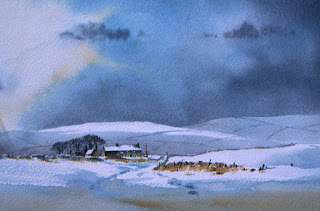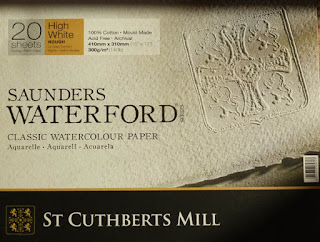This is the time of year when many artists think about taking up a course to improve their painting skills, and naturally to do this in beautiful scenery, in the comfort of a truly welcoming hotel and with a tutor whose work you wish to emulate, can provide the most rewarding experience. Many find that at home there are too many distractions, and getting away with like-minded folk for an intensive week of painting can be the optimum way of pushing your work forward.
Jenny and I work hard on our courses to ensure that everyone gets plenty of attention and demonstrations. One of our favourite locations is Snowdonia in North Wales where there is an infinite choice of a wide variety of painting subjects, with so many of them visible from the road or nearby, which means, of course that you don’t have to walk very far to find a superb subject…..but you can, if you wish, hike into the more remote locations.
This autumn our course in the Sygun Fawr Country House in Snowdonia runs from 27th October to 1st November, timed to coincide with the autumn colours. You will find details here, or you can telephone the Sygun Fawr Country House on 01766 890258
I am sorry there is no illustration with this blog, but Blogger keep changing the set-up almost every time I wish to set up a post and this time I’ve failed to get the painting up, so I’ll have to move elsewhere I guess. I’ll try to make it as smooth a transition as possible. Keep watching this space.
A HAPPY NEW YEAR to you all, and enjoy your painting in 2013

 This watercolour shows a lonely farm on Tideswell Moor in Derbyshire, where you can find many similar compositions, at times without even needing to get out of your car! While it’s tempting to think of snow as being white, the snow as we see it varies considerably in tone, sometimes appearing almost black when in deep shadow and backlit by strong sunshine. If you wish to push a snowy hill or mountain back into the distance lay a weak wash of blue or blue-grey over it, as you can see on the right-hand distant hill where I used cobalt blue. By comparison the left-hand hill, which is simply the white of the paper, really does come forward. To accentuate the white roof I’ve set it against a mid-tone background: planning your tones like this is easy with some forethought before starting to paint.
This watercolour shows a lonely farm on Tideswell Moor in Derbyshire, where you can find many similar compositions, at times without even needing to get out of your car! While it’s tempting to think of snow as being white, the snow as we see it varies considerably in tone, sometimes appearing almost black when in deep shadow and backlit by strong sunshine. If you wish to push a snowy hill or mountain back into the distance lay a weak wash of blue or blue-grey over it, as you can see on the right-hand distant hill where I used cobalt blue. By comparison the left-hand hill, which is simply the white of the paper, really does come forward. To accentuate the white roof I’ve set it against a mid-tone background: planning your tones like this is easy with some forethought before starting to paint.


